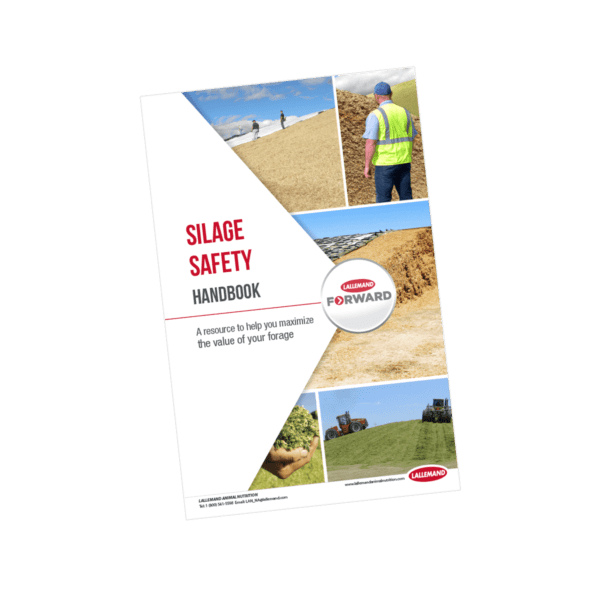评估青贮饲料质量的最佳方法是从青贮饲料取适量样品,送到经认证的的分析实验室进行发酵指标和营养分析。
不过,可以从青贮饲料的外观和味道看到发酵过程中发生了什么。
| SMELL | PROBABLE CAUSE | MANAGEMENT ISSUE | RECOMMENDED ACTION(S) |
|---|---|---|---|
| Sweet Acid | • Probable strong fermentation • pH could be too low | • Could have stability problems during feedouT | • Check pH • Check yeast and mold levels |
| Acetic/ Vinegar | • Elevated acetic acid level caused by either: 1. High lactate, acetate and propionate resulting in good stable silage, that feeds well 2. Lower acetate, some ethanol, maybe some butyric, iso-butyric (messy VFA profile), also some ammonia resulting in slow fermentation | • In the case of lower acetate levels, silage may not be stable | • Check VFAs • Focus on optimal feed management (remove loose silage, maintain tight face, etc.) |
| Fecal/ putrid/ decaying | • Slow fermentation and/or contamination (ash > 8%) has resulted in clostridia dominating the fermentation and producing butyric acid, ammonia, amines (e.g. putrescine, cadaverine) • Possible overcompaction of very low DM forage • Possible ensiling at very high temperatures | • Silage will be wet, pH may be elevated or may be low • Silage will be very stable but intakes will be low • Forcing high intakes can cause health and fertility problems | • Spread out to aerate and reduce butyric acid levels • Feed as low proportion of ration, mask with suitable flavor (e.g. butterscotch, caramel after checking for toxins) • Do not feed to pregnant cows, transition cows or cows in first 100 days of lactation |
| Earthy | • Bacillus growth | • pH will be high • Silage will heat and may also go moldy • Must be fed quickly, removing moldy material | • Discard spoiled silage • Consider treating TMR with preservative and/or flavoring |
| No smell to alcoholic or fruity/ yeasty/ bread odor | •Yeast growth, consumption of VFAs | • pH will be elevated, may be some alcohol on analysis • Micro will probably show high yeast levels • Silage to very likely be warm, hot or likely to heat • May also be or go moldy | • pH will be elevated, may be some alcohol on analysis • Micro will probably show high yeast levels • Silage to very likely be warm, hot or likely to heat • May also be or go moldy |
| Tobacco/ burnt odor | • Silage has undergone excessive heating due to yeast and/or Bacillus growth • May also be moldy | • Analysis shows little or no VFAs or other volatiles • May have a high level of bound/heat damaged protein (ADIN) indicating temperatures have been in excess of 100˚F (38˚C) • May have reasonable/high intake (cows like the taste) but will not perform well since most of the energy has already gone | • Adjust ration to provide adequate energy and nutrients • Consider treating the TMR • Consider inclusion of corn cob mix (ccm); crimped grain, molasses and soy |
| Musty/ moldy | • Molds are growing in the silage, probably visibly • Silage has already heated due to yeast growth with losses of dry matter and nutrients | • Possible presence of mycotoxins | • Remove and discard moldy silage |




